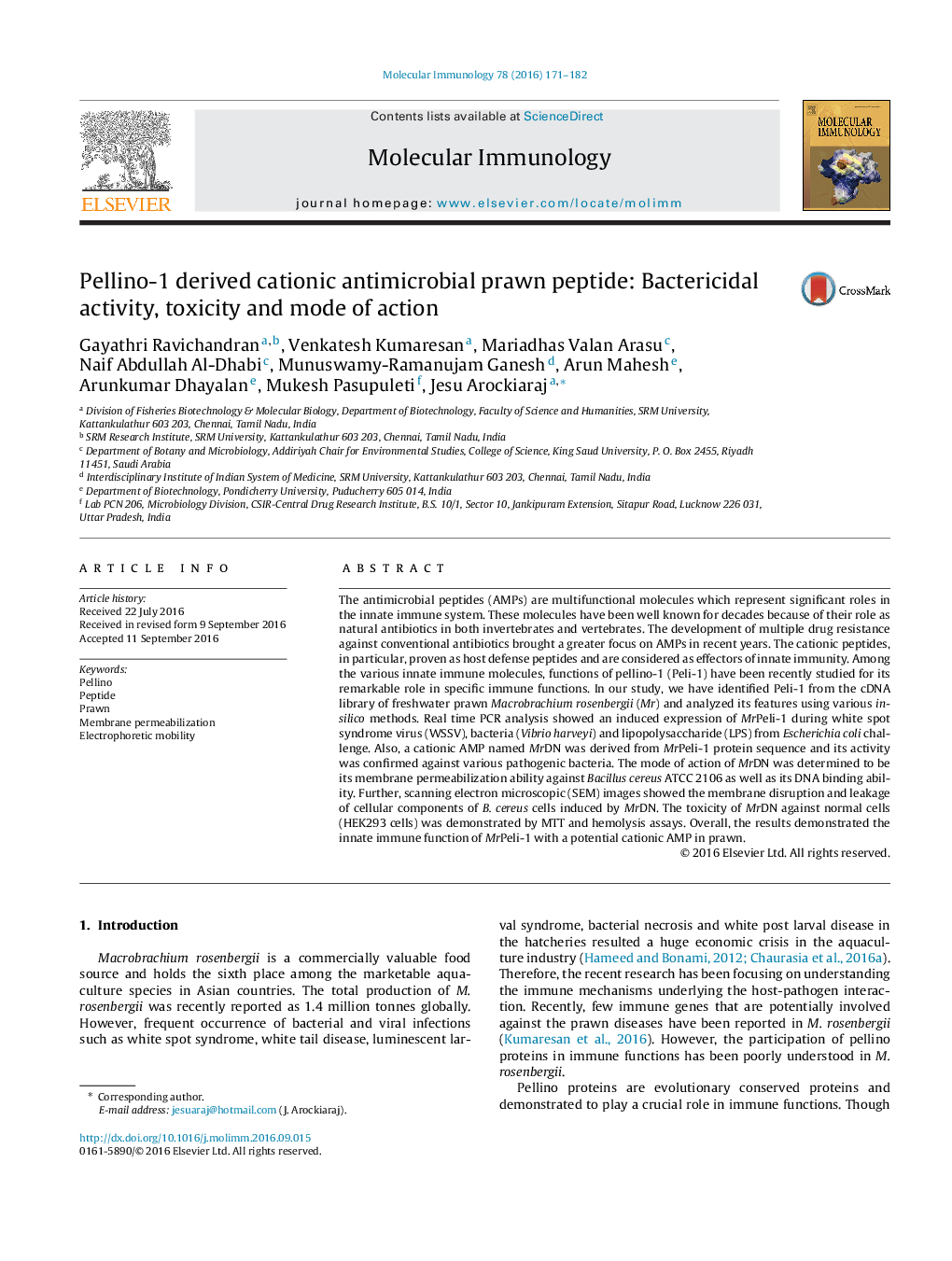| Article ID | Journal | Published Year | Pages | File Type |
|---|---|---|---|---|
| 8648651 | Molecular Immunology | 2016 | 12 Pages |
Abstract
The antimicrobial peptides (AMPs) are multifunctional molecules which represent significant roles in the innate immune system. These molecules have been well known for decades because of their role as natural antibiotics in both invertebrates and vertebrates. The development of multiple drug resistance against conventional antibiotics brought a greater focus on AMPs in recent years. The cationic peptides, in particular, proven as host defense peptides and are considered as effectors of innate immunity. Among the various innate immune molecules, functions of pellino-1 (Peli-1) have been recently studied for its remarkable role in specific immune functions. In our study, we have identified Peli-1 from the cDNA library of freshwater prawn Macrobrachium rosenbergii (Mr) and analyzed its features using various in-silico methods. Real time PCR analysis showed an induced expression of MrPeli-1 during white spot syndrome virus (WSSV), bacteria (Vibrio harveyi) and lipopolysaccharide (LPS) from Escherichia coli challenge. Also, a cationic AMP named MrDN was derived from MrPeli-1 protein sequence and its activity was confirmed against various pathogenic bacteria. The mode of action of MrDN was determined to be its membrane permeabilization ability against Bacillus cereus ATCC 2106 as well as its DNA binding ability. Further, scanning electron microscopic (SEM) images showed the membrane disruption and leakage of cellular components of B. cereus cells induced by MrDN. The toxicity of MrDN against normal cells (HEK293 cells) was demonstrated by MTT and hemolysis assays. Overall, the results demonstrated the innate immune function of MrPeli-1 with a potential cationic AMP in prawn.
Related Topics
Life Sciences
Biochemistry, Genetics and Molecular Biology
Molecular Biology
Authors
Gayathri Ravichandran, Venkatesh Kumaresan, Mariadhas Valan Arasu, Naif Abdullah Al-Dhabi, Munuswamy-Ramanujam Ganesh, Arun Mahesh, Arunkumar Dhayalan, Mukesh Pasupuleti, Jesu Arockiaraj,
